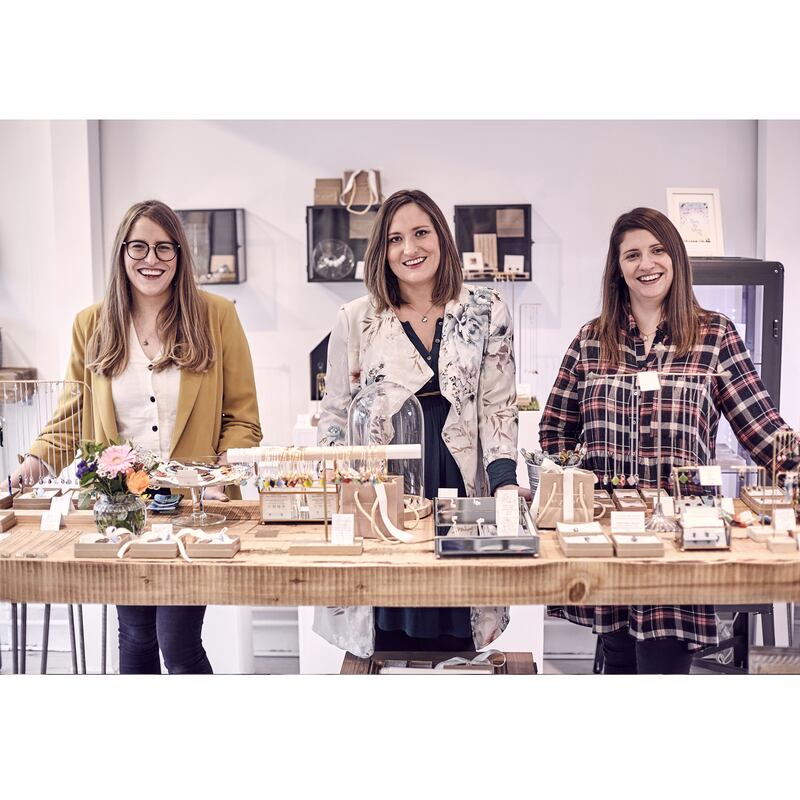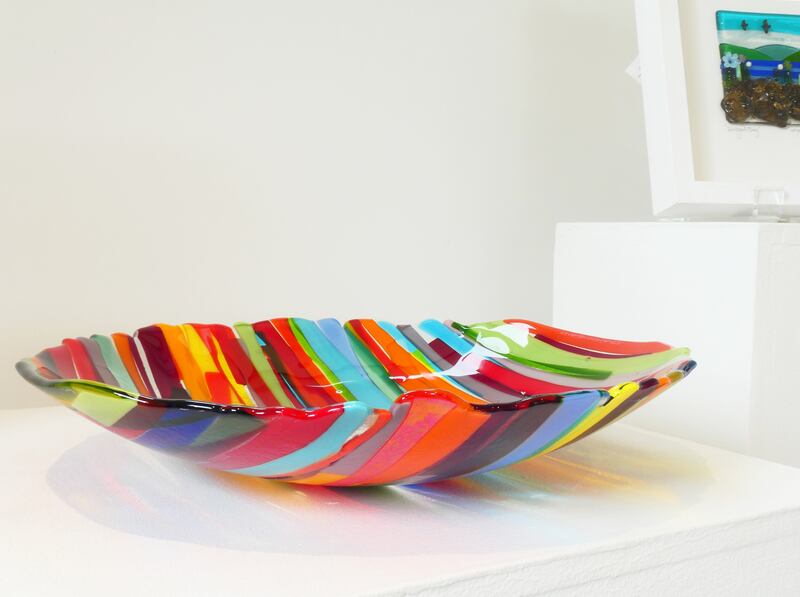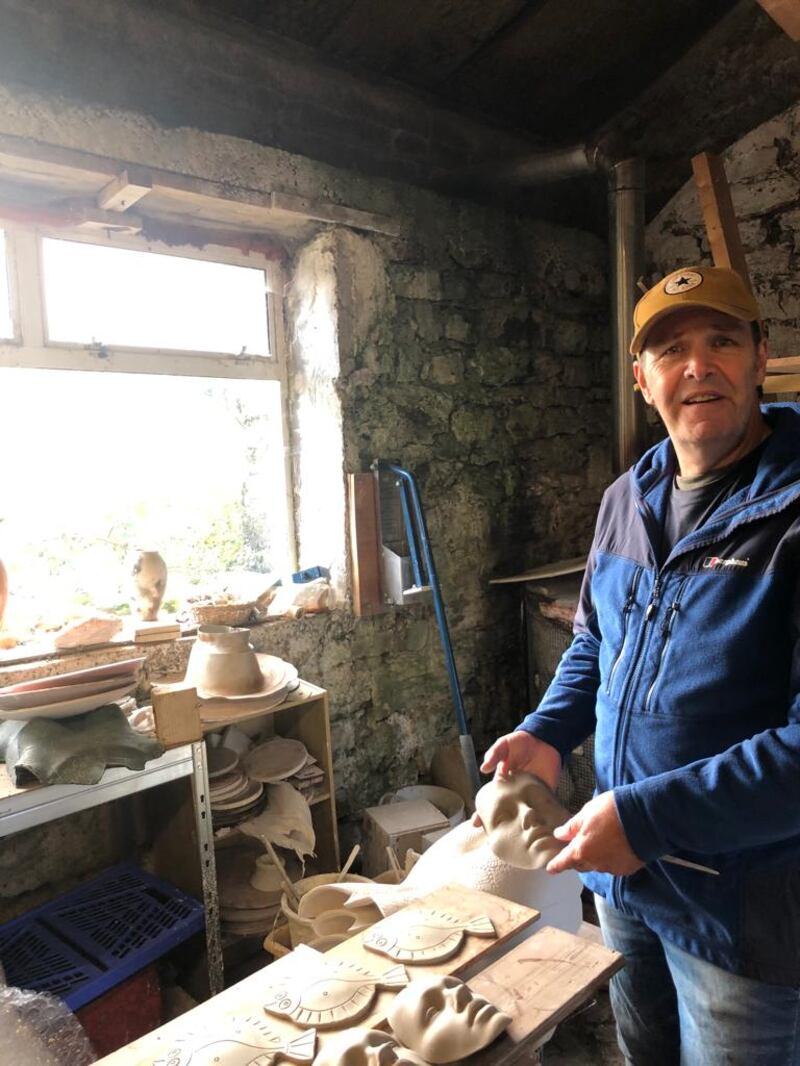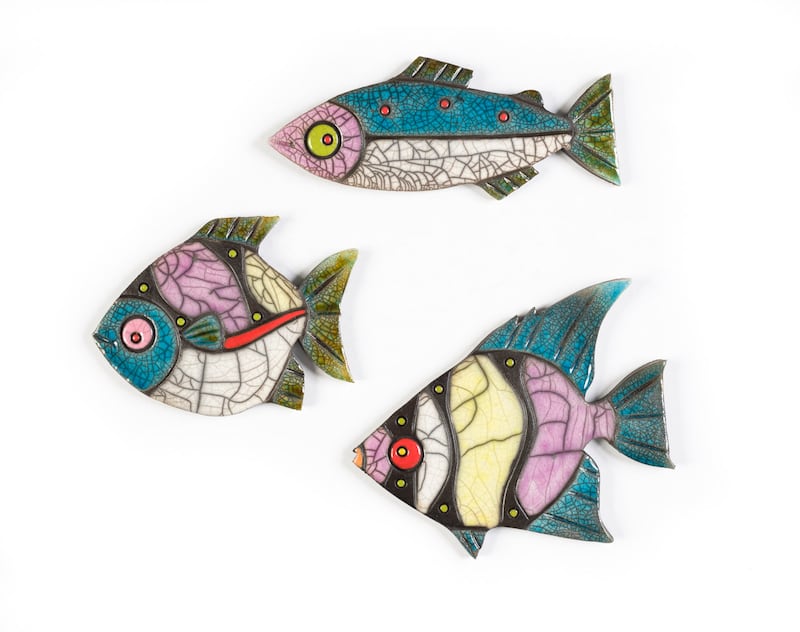Whether it was making rugs for royals such as King Charles and Queen Camilla, former presidents Mary Robinson and Mary McAleese or, indeed, onetime taoiseach Charles Haughey, weaving is a way of life for Beth Moran.
For the Massachusetts native and long-time Co Mayo island resident, each unique piece she creates is about “building a story, one thread at a time”.
Unsurprisingly, she has recently been included in the Design and Crafts Council of Ireland’s top 50 craftspeople. For over three decades Beth Moran has been inspired by “the unfolding secrets and ever-changing seasonal tapestry” surrounding her studio and home, which overlooks the ocean in the village of Ballytoughy Mór on Clare Island.
The last house on the winding road to the lighthouse is also where she and her late husband, islander Máirtín, raised their three boys, Oisín, Donal and Matthew, on their small farm.
From Baby Reindeer and The Traitors to Bodkin and The 2 Johnnies Late Night Lock In: The best and worst television of 2024
100 Years of Solitude review: A woozy, feverish watch to be savoured in bite-sized portions
How your mini travel shampoo is costing your pocket and the planet - here’s an alternative
My smear test dilemma: How do I confess that this is my first one, at the age of 41?
Ironically, Beth’s first trip to the Clew Bay outpost was on a photographic field-trip with American teacher, Ron Rosenstock.
“In many ways this was how I first learned to appreciate and capture the delicate uniqueness of an image: its transience and permanence,” she explains.
“I think in a world where more and more things are being mass-produced it is nice to preserve the personal touch. I love to let my work unfold – painstakingly but without a plan – so that any ‘mistake’ becomes a creative opportunity.”
She works with a variety of materials, from her own sheep’s wool, homespun and naturally dyed, to fine linen and silk.
“With the natural dyeing I like to use what is indigenous and I think my favourite dye is the most traditional to the island. It is the lichen, which has been used here for centuries. It is not seasonal so offers a year-round resource and the colour is magnificent. A rusty red which mirrors a lot of colour found in the landscape. There are many dyes I use and I am always trying to add to my repertoire. They range from gorse flowers, bog myrtle, nettles. Onion skins are also an excellent dye source and extremely colour-fast,” she says.
From rugs to throws, wall-hangings to table-runners, scarves and shawls, signature items of clothing, toys and bags, Moran is constantly creating new designs.
Unsurprisingly, there have been challenges and not only from the high seas and wild winds that are part of island life. Clearly, Moran’s resilience and deep spirituality prevails.
“The pandemic certainly influenced my creativity in many ways. It isolated me to a whole new level but also helped me to discover a deeper connection with humanity. It also offered me the head space to develop new ideas and, significantly, develop a new website with an online shop, with great support from Mayo County Enterprise Board,” she says.
Moran adds: “The problem with the online shop is that my collections sell out so fast. One could say, a good complaint.”
“As we readjusted then to a more normal life, Máirtín’s sudden death in May 2022 left me with a gaping hole to fill. I questioned all aspects of myself including my creativity. I found I had to discover who I was and through this process feel I have come to a whole new level of expression,” she observes.
It was then she designed and created her White Collection, which “offered a place and space for her to process her grief”.
Living on an island has given me a real sense of belonging. I would love to pass on the skill to a new generation and am working with some island children with great hopes that the future of this craft will be safe in their fabulous little hands
Passing on her skills to some of the island children, as well as one-to-one tutorials, has also helped Moran’s readjustment to life without Máirtín, who was “Mr Maintenance” for her cottage industry.
“Living on an island has given me a real sense of belonging. I would love to pass on the skill to a new generation and am working with some island children with great hopes that the future of this craft will be safe in their fabulous little hands,” she says.
The fact that her son Donal has returned home and pursues his craftsmanship making musical instruments has been “uplifting and inspirational” for her.
“His instrument-making is also such a personal process. He makes shuttles for my loom and I make guitar straps for his instruments,” she says.
Sister, sister
Up the coast in Donegal, it is all about the delicate process of making glass-fused jewellery and vessels for the three McGonigle sisters. They grew up a stone’s throw from the famous surfing beach at Rossnowlagh, and their art is continually inspired by, “all that colour, texture and rugged wild landscape on our doorstep”.
“Our surroundings have woven their way into every piece we make,” says Zara, the youngest sister. “We make jewellery in colours that we love and want to wear and every season those colours change. We make glass-scene art featuring all our favourite locations around Donegal, celebrating its wildness and character.”
She explains that Elaine, the eldest of the three sisters, “forged the road to art and design” for both herself and Lyndsey, the middle sister.
All three studied foundation art in the North West Regional College in Limavady, Co Derry, and from there moved on to the National College of Art and Design (NCAD) in Dublin, with the two older girls specialising in glass, and Zara opting for textile design.
“I had grown up watching Elaine and Lyndsey make glass, and by the time I went to college in 2008, I was lucky to have had nearly five fun years of glassmaking and so I wanted to try something new,” says Zara.
The two older sisters established McGonigle Glass in 2003, with Zara as their little helper during those early years, before she headed off to college herself.
“After Elaine graduated from NCAD, she worked a few part-time jobs in Dublin while she tried to figure out her future. Lyndsey was preparing her graduate show at the time when Elaine suddenly suggested to her that they should make a business plan,” Zara recalls.


Serendipitously, while they were filling out the forms for the business plan grant, Elaine was told about a unit that had just become available for rent in the Donegal Craft village.
“The craft village is just ten minutes’ drive from the home where we grew up, so it was no-brainer.
“Lyndsey’s grad show was on one week and the week after they were setting up shop with very little business knowledge but with a whole lot of can-do attitude,” Zara recalls.
Two decades later the three sisters still share the studio and shop in the craft village, as well as their online shop.
Zara explains that whilst each of them has a separate role, all three are involved in the completion of a piece.

“Lyndsey makes all of our glass beads, Elaine hand-makes all of our glass scene pictures and fused jewellery components and I am in charge of printing the paintings and our web designer. Once we’ve had a quick chat over a cuppa and check who is doing what on that day, our workflow is pretty fluid. Being sisters it is quite easy to read each other.”
Hot fire
Down at the southern end of the Wild Atlantic Way in Kinsale, ceramicist Julian Smith’s craft is a more solitary pursuit. The Scottish native moved to Judy Greene Pottery in Galway over 25 years ago, after completing a masters in ceramics in Cardiff University.
“As a keen traditional flute player and fly fisherman, I fitted right in to the cultural scene in Galway. However, after discovering Kinsale, I moved there in 1999 to set up a studio concentrating on Raku-fired ceramics,” says Smith.
He explains that Raku is a technique, originating in Japan in the 16th century, in which work is rapidly fired to 1,000 degrees Celsius, and is then removed from the kiln while still glowing red-hot.



“Each piece is then placed in a container with combustible materials creating striking colours using metal oxides. The charm of Raku lies in its use of primitive materials, which can nevertheless produce highly sophisticated results,” says Smith.
Smith sells his work through galleries, such as The Boathouse in Kinsale.
“There is a thriving artistic community here, with a great co-operative spirit with many shops and galleries supporting local artists. It is hard not to be inspired by the beautiful surrounds of West Cork. Local flora and fauna grow close to my workshop and feature in a lot of my work,” Smiths says.
Viewed as one of Ireland’s leading Raku artists, Smith specialises in human body casts with swirling copper glazes, as well as narrative wall-panels decorated with glazes and enhanced with gold and silver leaf.





